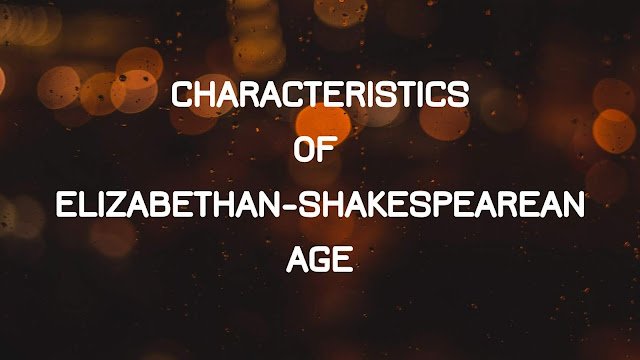Dhvani Theory - Anandvardhan
Introduction
Ānandvardhan was a well-reputed Kashmirian poet and philosopher. Kahlana, the celebrated author of Rajtarangini mentioned him as one of the ornaments adorning the court of King Avantivarman. Thus, on the evidence of Rajtarangini, Anandvardhan attained fame during the reign of Avantivaram (in the 9th century A.D.)
In the evolution of Alamkāra literature, Dhvani or Vyanjana occupies a paramount place. The medieval Alamkarikās felt that for the purpose of aesthetic experience and Rasānubhuti, the aid of Dhvani must exist because the Rasā experience is never possible on Vakyabhumi.
The Dhvani Theory found it's first systematic expression in Ānandvardhan's 'Dhvanyāloka'. His theory dominated Indian Poetics from the 9th to 12th century A.D.
The Dhvani Theory found it's first systematic expression in Ānandvardhan's 'Dhvanyāloka'. His theory dominated Indian Poetics from the 9th to 12th century A.D.
Grammatical Definitions
- ध्वनति इति ध्वनि: - That which suggest both word and meaning is Dhvani
- ध्वन्यते इति ध्वनि - That which is suggested is Dhvani
- ध्वननं ध्वनि: - Process of Suggestion is Dhvani
- ध्वनि समुदाय: ध्वनि: - Entire Literature is Dhvani
"That kind of poetry, wherein the (conventional) meaning renders itself secondary or the (conventional) word renders it's meaning secondary and suggests the (intended or) implied meaning; is designated by the learned as Dhvani or 'Suggested Poetry'"
Meaning
That meaning which wins the admiration of refined critics is decided to be the soul of the poetry. It has two aspects:
- Explicit
- Implicit
Explicit os commonly denoted by various figures of speech. But the implicit aspect is quite different. In the words of first-rate poets, it shines supreme and towers above the beauty of the striking external constituents even as a charm in ladies.
Construction of Dhvani
The communication of proper meaning through words requires a proper arrangement of sounds. Language basically can be written or spoken which has words as their foundation. Sanskrit critic has described three types of words:
- अभिधा (Abhidha) - Literal Meaning of the word
- लक्षणा (Lakshana) - Characteristical Meaning of the word
- व्यंजना (Vyanjana) - Poetic & Metaphysical Meaning of the word
In this way, the third word Vyanjana reaches the soul and gives the suggested (extraordinary) meaning of the word. It is also called 'dhvani'. Basically, Dhvani is created by Pada (पद) which combines to form Vākya (वाक्य) and from Vākya, Rasābhāva () is generated.
Supremacy of Dhvani
Many authors such a Bharat, Mammatt, Bhāmah, Dandi considered various aspects such as Rasā, Alamkār, Riti, Guna-dosh as the important part of the poem. But Ānandvardhan is one step ahead. He said the above-mentioned aspects were the body of the poetry. In short, they were part of the poetry. Whereas 'Dhvani' is the soul of poetry. Just like the human body is not alive with soul, poetry is also lame without Dhvani.
Dhvani Theory
A composition where suggested sense predominates is called Dhvani. The word Dhvani is used for both - the suggestive word and the suggestive meaning. The poetic language can never be possible without Dhvani.
In Dhvanyāloka, Dhvani becomes an all-embracing principle that explains the structure and function of the major elements of literature - the aesthetic effect (Rasā), the figural mode and devices (Alamkāra), the stylistic values (Riti) and excellence and defects (Guna-dosa).
Ānandvardhan in his Dhvanyāloka hails the Vaiyakaranis with great respect. He says,
'The expression is designated by the learned. The foremost among the learned are grammarians because grammar lies at the root of all studies'
He has also presented and classified different kinds of suggestion. In Todorov's view,
'Ānandvardhan was perhaps the greatest of all theorists of textual symbolism'
He used the term 'dhvani' to designate the universe of suggestion.
Dhvani is used for
- Conventional meaning
- The sound structure of words
- The suggestible meaning itself
- the power of the word to convey the suggestible meaning
- the poetic work containing the suggestible meaning
Rigvedā () also makes a distinction between the literal meaning and inner significance -
'He sees but sees not
One hears but hears not'
(10.71.4)
Besides literal meaning, there is a socio-cultural meaning dependant on the contexts and emotions. The vyanjāna or dhvani may be communicated by words, sentences, discourse, intonation, gestures and even sounds. Another word used for suggested meaning is Pratīyamānārtha.
Conclusion
Dhvani theory is a theory of meaning and symbolism which leads to the poetry of suggestion being accepted as the highest kind of poetry. Dhvani Theory is, therefore, Ānandvardhan's greatest contribution to the poetic world. Through Dhvani or Vyanjana, the poet creates a world of his expression embellished with various poetic devices. Hence, Dhvani in true sense is beyond the suggestible meaning and suggestible element. Ānandvardhan's Dhvani Theory is highly supported by Abhinavgupta.




Crisp and brief. Very well encapsulated. Keep it up. Good work!
ReplyDeleteEnikkonnum manassilayilla😐
DeleteThis comment has been removed by the author.
Deletegreat post! found it super helpful and clear, do you have any sources you would recommend to learn more? also do you know where in the dhvanyaloka that quote is from? thanks!! : )
DeleteSimple and helpful
ReplyDeleteWas helpful
ReplyDeleteEasy and helpfull of my especially spm sir ...b/c I will be same copied to answer sheet.
ReplyDeleteVery helpful👍🥰
ReplyDeleteThank you so much
ReplyDeleteThank you so much, analysis is very useful.
ReplyDeleteNice explanation.....if you like to explore my blog please visit https://nidhislnk95.blogspot.com/2024/05/blog-post.html
ReplyDelete